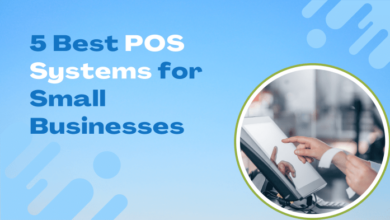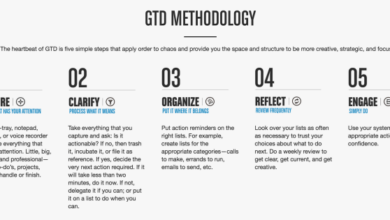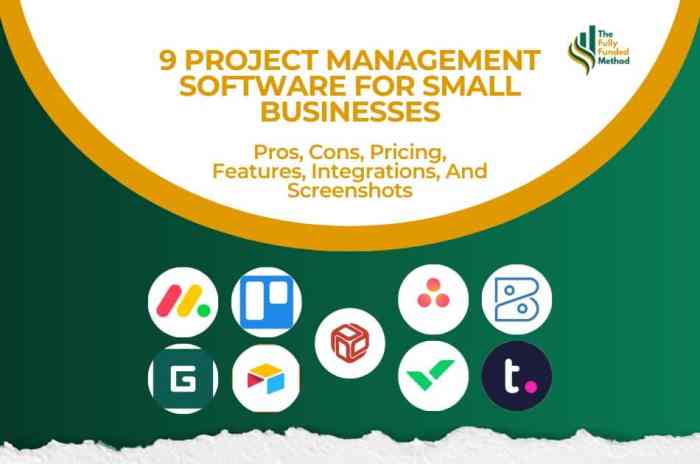
Small Business Project Management Software: Streamline Your Workflow
Small business project management software is a game-changer for entrepreneurs and small business owners looking to improve efficiency and productivity. Imagine a world where tasks are organized, deadlines are met, and communication flows seamlessly. This software empowers small businesses to manage projects effectively, track progress, and ultimately achieve their goals.
Project management software provides a central hub for all your project needs, from task assignments and deadlines to collaboration tools and reporting features. It helps you stay organized, avoid bottlenecks, and make data-driven decisions, ultimately leading to increased productivity and profitability.
Introduction to Small Business Project Management Software
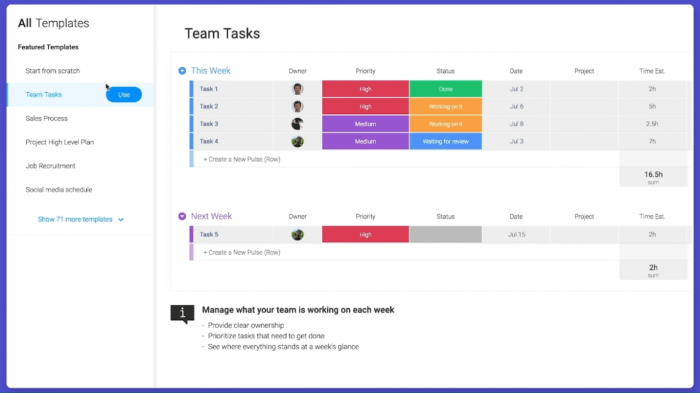
Small businesses often face a unique set of challenges when it comes to managing projects. Limited resources, tight deadlines, and competing priorities can make it difficult to stay on track and deliver successful outcomes. This is where project management software comes in.
It can help small businesses streamline their workflows, improve communication, and ultimately, achieve their goals.
Benefits of Using Project Management Software for Small Businesses
Project management software offers several benefits for small businesses, including:
- Improved Organization and Efficiency:Project management software provides a central hub for all project-related information, including tasks, deadlines, and resources. This helps to keep everyone on the same page and ensures that nothing falls through the cracks.
- Enhanced Communication and Collaboration:Many project management software solutions include features for real-time communication, such as chat, video conferencing, and file sharing. This allows team members to collaborate effectively, regardless of their location.
- Better Time Management:Project management software can help small businesses track time spent on projects, identify bottlenecks, and allocate resources more effectively.
- Increased Productivity:By streamlining workflows and improving communication, project management software can help small businesses boost productivity and deliver projects on time and within budget.
- Improved Project Visibility:Project management software provides a clear overview of project progress, allowing managers to monitor performance and identify potential risks early on.
Types of Small Business Project Management Software
There are many different types of project management software available for small businesses. Some popular options include:
- Cloud-Based Project Management Software:This type of software is accessed via the internet and can be used from any device. Popular cloud-based project management software options include Asana, Trello, and Monday.com.
- On-Premise Project Management Software:On-premise software is installed and hosted on a company’s own servers. This type of software may offer more control and security, but it can be more expensive and complex to manage. Examples include Microsoft Project and Atlassian Jira.
- Free and Open-Source Project Management Software:There are several free and open-source project management software options available, such as OpenProject and GanttProject. These solutions are often a good choice for small businesses with limited budgets.
Key Features of Small Business Project Management Software
Small business project management software offers a suite of tools designed to streamline workflows, enhance collaboration, and boost productivity. These features are essential for managing projects effectively, ensuring deadlines are met, and achieving desired outcomes.
Task Management
Task management is a cornerstone of effective project management. Small business project management software offers features that enable users to create, assign, prioritize, and track tasks efficiently.
- Task Creation and Assignment:Users can create detailed tasks with clear descriptions, due dates, and assigned team members. This ensures everyone is aware of their responsibilities and deadlines.
- Task Prioritization:Features like task boards or Kanban views allow users to prioritize tasks based on urgency or importance. This helps teams focus on the most critical tasks first.
- Task Tracking and Progress Monitoring:The software provides real-time updates on task progress, allowing managers to monitor team performance and identify potential bottlenecks.
- Sub-tasks and Dependencies:Complex projects can be broken down into smaller, manageable sub-tasks. The software can track dependencies between tasks, ensuring that tasks are completed in the correct order.
For example, a small design agency using project management software could create tasks for each stage of a website design project: “Conduct Client Meeting,” “Develop Wireframes,” “Design Website Pages,” “Develop Website Functionality,” and “Test and Launch.” The software allows them to assign these tasks to specific designers, track progress, and ensure deadlines are met.
Small business project management software can help you stay organized and on track, even when the holidays are approaching. Imagine adding a touch of magic to your office space with a giant snowflake light up marquee – it would certainly add some festive cheer! But remember, even with a dazzling centerpiece, you’ll still need a reliable system to manage your projects and deadlines, so don’t forget to invest in the right software.
Collaboration Tools
Effective collaboration is crucial for small businesses to succeed. Project management software facilitates collaboration by providing tools for communication, file sharing, and real-time updates.
- Communication Channels:The software often includes integrated chat features, allowing team members to communicate directly within the project environment. This eliminates the need for separate messaging platforms.
- File Sharing and Version Control:Team members can easily share documents, images, and other project files within the software. The software often includes version control features, ensuring that everyone is working with the latest version of files.
- Real-time Updates and Notifications:The software provides real-time updates on project progress, task status, and communication threads. Users can set up notifications to receive alerts when important updates occur.
Imagine a small marketing team using project management software to launch a new product. They can share marketing materials, collaborate on social media posts, and track the progress of their email marketing campaign. Real-time updates and notifications keep everyone informed about the campaign’s progress.
Communication Channels
Effective communication is essential for successful project management. Small business project management software offers various communication channels to facilitate seamless collaboration and information sharing.
- Internal Messaging:The software often includes integrated chat features, allowing team members to communicate directly within the project environment. This eliminates the need for separate messaging platforms and keeps all project-related communication in one place.
- Discussions and Comments:Users can leave comments on tasks, files, or project updates, fostering open communication and ensuring everyone is on the same page.
- Notifications and Alerts:The software provides notifications and alerts to keep users informed about important updates, task assignments, deadlines, and other critical information.
- Email Integration:Many software solutions integrate with email, allowing users to send project-related emails directly from the platform. This streamlines communication and maintains a centralized record of all correspondence.
For example, a small software development team can use the software’s internal messaging feature to discuss coding challenges, share progress updates, and ask for feedback. Notifications ensure that everyone is aware of important deadlines and updates, while email integration allows them to communicate with clients and stakeholders efficiently.
Reporting Capabilities
Project management software provides valuable insights into project performance through comprehensive reporting capabilities.
Finding the right project management software for your small business can be a challenge, but it’s essential for staying organized and on track. And while you’re focusing on your business goals, don’t forget to keep your team looking sharp! Check out the L.K.
Bennett winter guide for office dressing for some stylish inspiration. With the right software and a polished look, you’ll be ready to conquer any project and impress your clients.
- Project Progress Reports:The software generates reports that track project progress, task completion rates, and overall project health.
- Time Tracking and Resource Allocation:The software can track time spent on tasks, providing insights into resource allocation and potential areas for improvement.
- Budget Tracking and Cost Control:The software can track project expenses and compare them against the budget, allowing managers to identify potential cost overruns and adjust spending accordingly.
- Customizable Reports:Users can create custom reports tailored to their specific needs, providing insights into key metrics and project performance.
A small consulting firm can use the software’s reporting capabilities to track the time spent on client projects, identify profitable projects, and allocate resources efficiently. The software’s budget tracking features can help them monitor expenses and ensure projects stay within budget.
Choosing the Right Software for Your Small Business
Selecting the right project management software is crucial for any small business, as it can significantly impact productivity, collaboration, and overall project success. With so many options available, it can be overwhelming to choose the best fit for your specific needs.
This section will guide you through the essential factors to consider when making this decision.
Factors to Consider When Choosing Project Management Software
The right software should align with your business goals, resources, and workflow. Here are some key factors to consider:
- Budget:Project management software comes in various pricing models, from free plans to premium subscriptions. Determine your budget and choose a solution that offers the necessary features within your financial constraints.
- Team Size:The number of users in your team will influence your software choice. Some solutions offer tiered pricing based on the number of users, while others have a fixed price regardless of team size.
- Project Complexity:The complexity of your projects will determine the level of features you need. If you handle simple tasks, a basic solution might suffice. However, for complex projects with multiple dependencies and stakeholders, you’ll need a more robust platform.
- Integration Needs:Consider your existing business tools and whether the project management software integrates seamlessly with them. For example, you might need integration with your email, calendar, or other business applications.
Comparing Software Options
Once you have a clear understanding of your needs, you can start comparing different software options. Consider these factors:
- Features:Evaluate the core features offered by each software, such as task management, collaboration tools, project planning, reporting, and communication channels. Choose a solution that provides the features essential for your workflow.
- Pricing:Compare pricing models, including monthly fees, per-user costs, and any additional features available for a premium price. Consider the value offered by each software in relation to its cost.
- User-friendliness:The software should be intuitive and easy to use for your team. Look for solutions with a user-friendly interface, clear navigation, and helpful tutorials or documentation.
Popular Small Business Project Management Software Options
To illustrate the differences between various project management software options, here’s a comparison of three popular choices:
| Software | Key Features | Pricing | Pros | Cons |
|---|---|---|---|---|
| Asana | Task management, project planning, collaboration tools, reporting, integrations | Free plan, Premium plan, Business plan, Enterprise plan | Intuitive interface, robust task management, comprehensive features, excellent integrations | Free plan has limited features, premium plans can be expensive for small businesses |
| Trello | Kanban boards, task management, collaboration tools, integrations | Free plan, Business Class plan, Enterprise plan | Simple and visual, easy to learn, highly customizable, great for team collaboration | Limited project planning capabilities, lacks advanced reporting features |
| ClickUp | Task management, project planning, collaboration tools, reporting, integrations, time tracking | Free plan, Unlimited plan, Business plan, Enterprise plan | Highly customizable, comprehensive features, robust integrations, free plan offers generous features | Can be overwhelming for beginners, complex interface, some features require a paid plan |
Implementing Project Management Software in Your Business

You’ve chosen the perfect project management software for your small business, but now comes the crucial step: implementation. This process involves more than just installing the software and hoping for the best. It requires careful planning, effective training, and a strategic approach to ensure smooth adoption and maximize its benefits.
Step-by-Step Implementation Guide
A structured approach to implementation is key for success. Here’s a step-by-step guide to help you navigate the process:
- Define Your Goals and Objectives:Clearly define what you want to achieve with the software. Are you aiming to improve communication, track progress more effectively, or streamline workflows? Establishing clear goals will guide your implementation strategy and measure its success.
- Choose a Pilot Team:Select a small group of enthusiastic and tech-savvy team members to be your early adopters. This pilot team will help test the software, identify potential issues, and provide valuable feedback for the wider rollout.
- Customize the Software:Many project management software solutions offer customization options. Take advantage of these features to tailor the software to your business’s specific needs and workflows. This ensures that the software fits seamlessly into your existing processes.
- Develop a Training Plan:Create a comprehensive training program that covers all aspects of the software, from basic navigation to advanced features. Offer a mix of online tutorials, live webinars, and hands-on training sessions to cater to different learning styles.
- Phased Rollout:Don’t overwhelm your team with a sudden switch. Instead, implement the software in phases, starting with a small group and gradually expanding to the entire organization. This allows for adjustments and ensures that everyone has ample time to learn and adapt.
- Provide Ongoing Support:Offer ongoing support to your team members, even after the initial training. This can include a dedicated support team, FAQs, online forums, or user guides. Continual support ensures that your team can overcome any challenges and fully utilize the software’s capabilities.
Training Team Members for Success
Training is crucial for ensuring the software’s successful adoption. Here are some best practices for training your team members:
- Keep it Practical:Focus on real-world examples and scenarios relevant to your team’s work. This helps them understand how the software can be applied to their daily tasks.
- Offer Different Learning Options:Provide a variety of training formats, including video tutorials, interactive demos, and hands-on workshops. This caters to different learning styles and ensures that everyone feels comfortable with the software.
- Encourage Questions and Feedback:Create an open and supportive environment where team members feel comfortable asking questions and sharing their feedback. This helps identify any areas that need further clarification or improvement.
- Provide Ongoing Support:Don’t stop at initial training. Offer ongoing support through FAQs, online forums, or a dedicated support team. This ensures that your team can overcome any challenges and fully utilize the software’s capabilities.
Implementation Checklist
Here’s a checklist to help you track your progress during the implementation process:
- Choose the Right Software:Conduct thorough research and select a software solution that aligns with your business needs and budget.
- Define Implementation Goals:Clearly define what you want to achieve with the software and set measurable objectives.
- Create a Project Plan:Develop a detailed implementation plan outlining key milestones, timelines, and responsibilities.
- Train Your Team:Design and deliver comprehensive training programs to ensure everyone understands the software’s features and functionalities.
- Customize the Software:Tailor the software to your business’s specific workflows and processes.
- Implement in Phases:Start with a pilot group and gradually expand to the entire organization.
- Monitor and Evaluate:Regularly monitor the software’s usage and gather feedback from your team to identify areas for improvement.
Using Project Management Software to Improve Efficiency and Productivity
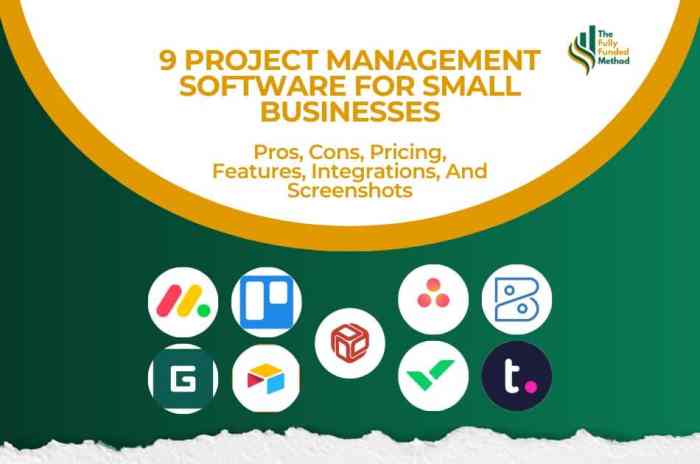
Project management software can be a game-changer for small businesses looking to boost efficiency and productivity. It provides a centralized platform to organize tasks, track progress, and improve communication, leading to smoother workflows and better results.
Streamlining Workflows and Improving Communication
Project management software helps small businesses streamline their workflows by providing a clear overview of tasks, deadlines, and responsibilities.
- Task Management:Project management software allows you to create, assign, and track tasks, ensuring everyone is aware of their responsibilities and deadlines. This eliminates confusion and ensures that tasks are completed on time.
- Collaboration Tools:Features like shared calendars, file sharing, and real-time chat enable teams to collaborate effectively, reducing communication silos and improving efficiency.
- Centralized Communication:Project management software provides a central hub for all project-related communication, eliminating the need for scattered emails and messages.
Tracking Progress and Identifying Bottlenecks
Project management software offers valuable insights into project progress, allowing you to identify potential bottlenecks and take corrective action.
Small business project management software is a must-have for staying organized and on track, but sometimes you need a system that goes beyond just managing tasks. When you’re ready to tackle payroll, benefits, and other HR functions, it’s helpful to understand the difference between payroll software, HRIS, ERP, and HCM.
These systems offer different levels of integration and functionality, so choosing the right one depends on your business’s specific needs and growth trajectory. Once you’ve established your core HR systems, you can more effectively leverage project management tools to streamline workflows and maximize productivity.
- Progress Tracking:Visual dashboards and reports provide a clear picture of project status, allowing you to monitor progress and identify areas that require attention.
- Bottleneck Detection:By analyzing task completion rates and identifying delays, you can pinpoint bottlenecks and address them proactively.
- Data-Driven Decision Making:Project management software provides data-driven insights that support informed decision-making, enabling you to optimize resource allocation and improve project outcomes.
Optimizing Project Management Software for Maximum Impact
To maximize the benefits of project management software, consider these practical tips:
- Choose the Right Software:Select a software solution that aligns with your specific needs and budget, considering features, ease of use, and integrations.
- Implement Thoroughly:Ensure all team members are trained on the software and its functionalities, promoting adoption and maximizing its impact.
- Set Clear Goals and Metrics:Define specific goals for using the software, such as improving task completion rates or reducing project delays. Track these metrics to measure the software’s effectiveness.
- Regularly Review and Adjust:Periodically review your software usage and identify areas for improvement. Make adjustments to optimize processes and ensure the software remains relevant and effective.
Case Studies of Successful Project Management Software Implementations: Small Business Project Management Software
Project management software has become an indispensable tool for small businesses seeking to streamline operations, enhance collaboration, and boost productivity. Numerous success stories demonstrate the transformative power of these tools. This section explores real-world examples of small businesses that have successfully implemented project management software, highlighting the challenges they faced, the solutions they implemented, and the impact on their business outcomes.
Impact of Project Management Software on Business Outcomes
Project management software empowers small businesses to achieve a wide range of positive outcomes. These tools can significantly improve project efficiency, communication, and collaboration, ultimately leading to increased productivity and profitability. The impact of using project management software on business outcomes can be categorized as follows:
- Improved Project Efficiency:Project management software provides a centralized platform for task management, scheduling, and resource allocation. This allows businesses to track project progress in real-time, identify bottlenecks, and allocate resources effectively. By automating repetitive tasks and streamlining workflows, businesses can reduce project completion time and optimize resource utilization.
- Enhanced Communication and Collaboration:Project management software fosters seamless communication and collaboration among team members. Features like real-time chat, file sharing, and task assignment enable teams to stay connected, share information, and work together efficiently. This reduces misunderstandings, improves transparency, and ensures everyone is on the same page.
- Increased Productivity:By simplifying project management processes, project management software empowers teams to focus on high-value tasks. Automating tasks, streamlining workflows, and providing clear visibility into project progress reduces distractions and improves focus, leading to increased productivity and higher-quality output.
- Improved Decision-Making:Project management software provides valuable insights into project performance, enabling businesses to make data-driven decisions. By tracking key metrics like task completion rates, project timelines, and resource allocation, businesses can identify areas for improvement, adjust strategies, and optimize project outcomes.
- Reduced Costs:Streamlining workflows, improving efficiency, and reducing errors through project management software can lead to significant cost savings. By minimizing wasted time and resources, businesses can allocate budgets more effectively and improve profitability.
Case Study: [Company Name]
[Company Name] is a small marketing agency that faced challenges in managing multiple client projects simultaneously. The agency struggled with communication breakdowns, missed deadlines, and difficulty tracking project progress. To address these challenges, [Company Name] implemented [Project Management Software Name].
- Challenges Faced:
- Communication breakdowns between team members and clients.
- Difficulty in tracking project progress and deadlines.
- Lack of centralized platform for project documentation and resources.
- Solutions Implemented:
- Used the task management feature to assign tasks to team members and track their progress.
- Leveraged the communication tools to facilitate seamless communication between team members and clients.
- Utilized the project calendar to schedule deadlines and milestones.
- Integrated the software with existing tools for a streamlined workflow.
- Impact on Business Outcomes:
- Improved communication and collaboration among team members.
- Increased project efficiency and on-time delivery.
- Enhanced client satisfaction through better communication and project transparency.
- Reduced administrative overhead and improved resource utilization.
Case Study: [Company Name]
[Company Name] is a small software development company that struggled to manage its growing workload. The company faced challenges in coordinating development teams, tracking project timelines, and ensuring consistent code quality. To overcome these challenges, [Company Name] adopted [Project Management Software Name].
- Challenges Faced:
- Difficulty in coordinating multiple development teams working on different projects.
- Lack of visibility into project progress and potential roadblocks.
- Challenges in maintaining consistent code quality across projects.
- Solutions Implemented:
- Utilized the project management software’s task management features to assign tasks to developers and track their progress.
- Leveraged the communication tools to facilitate collaboration and knowledge sharing among team members.
- Integrated the software with the company’s version control system to track code changes and ensure code quality.
- Used the reporting features to monitor project progress and identify areas for improvement.
- Impact on Business Outcomes:
- Improved coordination and collaboration among development teams.
- Increased project visibility and reduced project delays.
- Enhanced code quality through better collaboration and version control.
- Increased efficiency and productivity, allowing the company to take on more projects.
Future Trends in Small Business Project Management Software
The world of project management is constantly evolving, with new technologies and trends emerging to make project management more efficient and effective. Small businesses need to stay ahead of the curve to remain competitive and leverage these advancements for better project outcomes.
Artificial Intelligence and Machine Learning
Artificial intelligence (AI) and machine learning (ML) are transforming project management by automating repetitive tasks, improving decision-making, and offering predictive insights.
- Automated Task Management:AI-powered tools can automatically assign tasks, track progress, and send reminders, freeing up project managers to focus on strategic tasks.
- Resource Allocation Optimization:AI algorithms can analyze historical data and current project demands to optimize resource allocation, ensuring the right people are assigned to the right tasks at the right time.
- Risk Prediction and Mitigation:ML models can identify potential risks based on past project data and provide recommendations for mitigation strategies, helping businesses avoid costly delays and setbacks.
Integration with Other Business Applications
Project management software is increasingly integrating with other business applications, creating a seamless workflow across departments and improving overall efficiency.
- CRM Integration:Integrating project management software with CRM systems allows businesses to track customer interactions and project progress simultaneously, improving customer service and project delivery.
- Accounting Integration:Integrating with accounting software enables businesses to track project budgets, expenses, and profitability in real-time, providing valuable financial insights.
- Communication and Collaboration Tools:Integrating with communication and collaboration platforms like Slack or Microsoft Teams allows for seamless communication and collaboration within project teams.
Cloud-Based Project Management
Cloud-based project management software offers numerous advantages for small businesses, including accessibility, affordability, and scalability.
- Accessibility:Cloud-based software allows teams to access project information and collaborate from anywhere with an internet connection, enhancing flexibility and remote work capabilities.
- Affordability:Cloud-based solutions often come with subscription-based pricing models, making them more affordable for small businesses compared to traditional on-premises software.
- Scalability:Cloud-based platforms can easily scale to accommodate growing businesses and project demands without requiring significant upfront investments in hardware or infrastructure.
Mobile-First Project Management
As mobile devices become increasingly ubiquitous, project management software is becoming more mobile-friendly, enabling teams to manage projects on the go.
- Real-Time Updates:Mobile apps provide real-time updates on project progress, task deadlines, and communication, keeping everyone informed and aligned.
- Task Management on the Go:Project managers can easily create, assign, and manage tasks from their mobile devices, ensuring that work continues even when away from the office.
- Improved Communication:Mobile apps facilitate seamless communication within project teams, enabling instant messaging, file sharing, and video conferencing.



